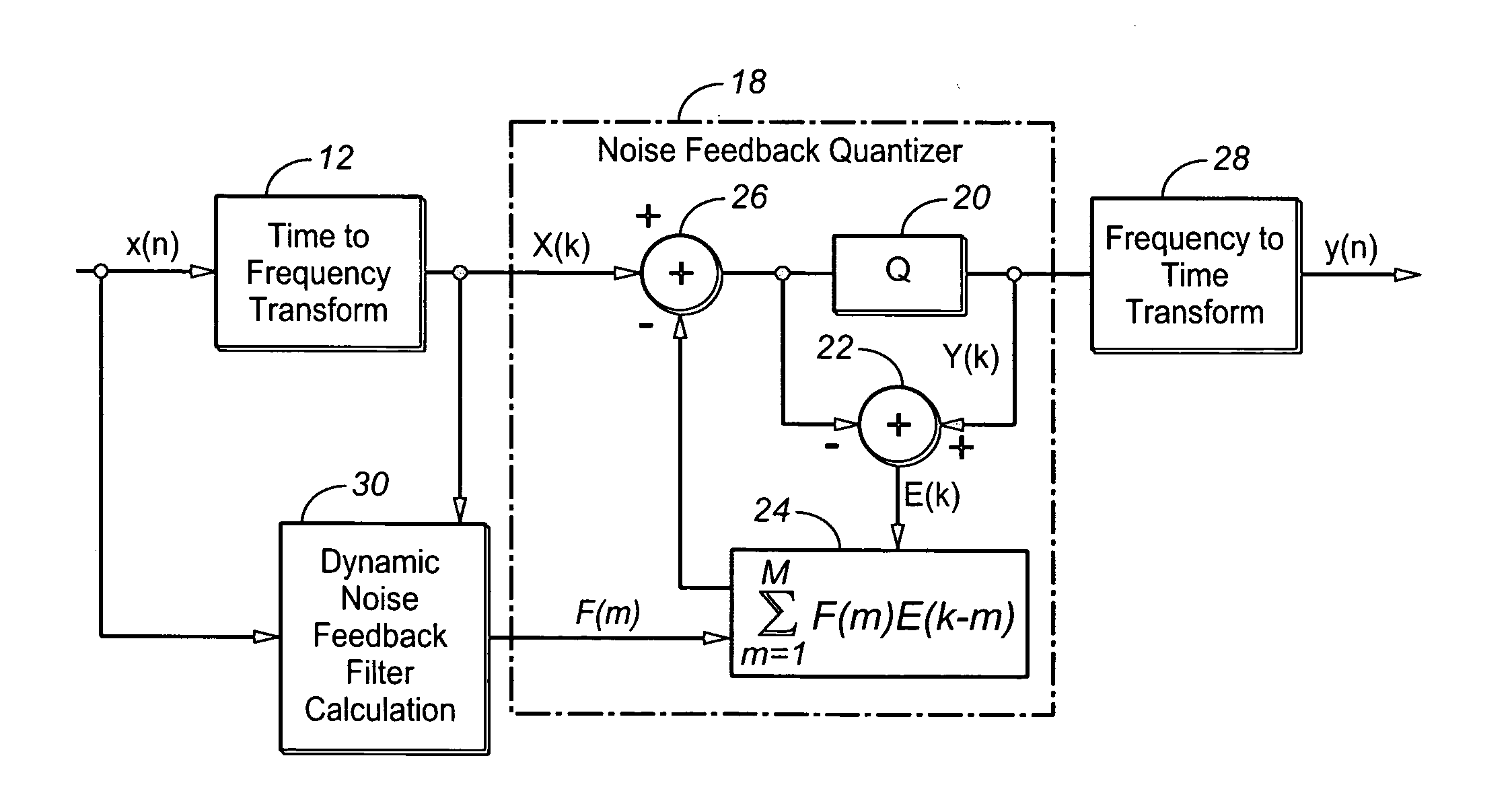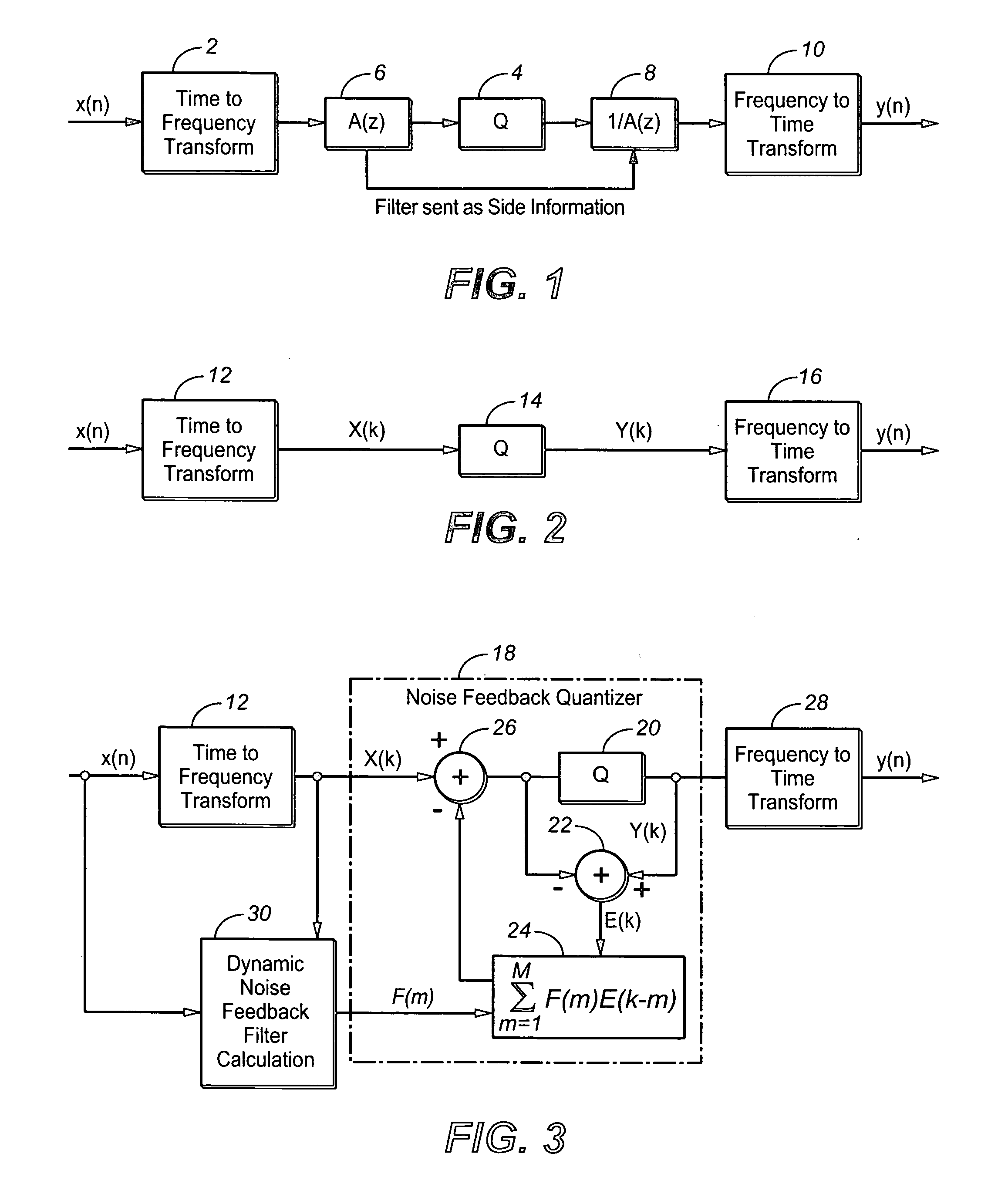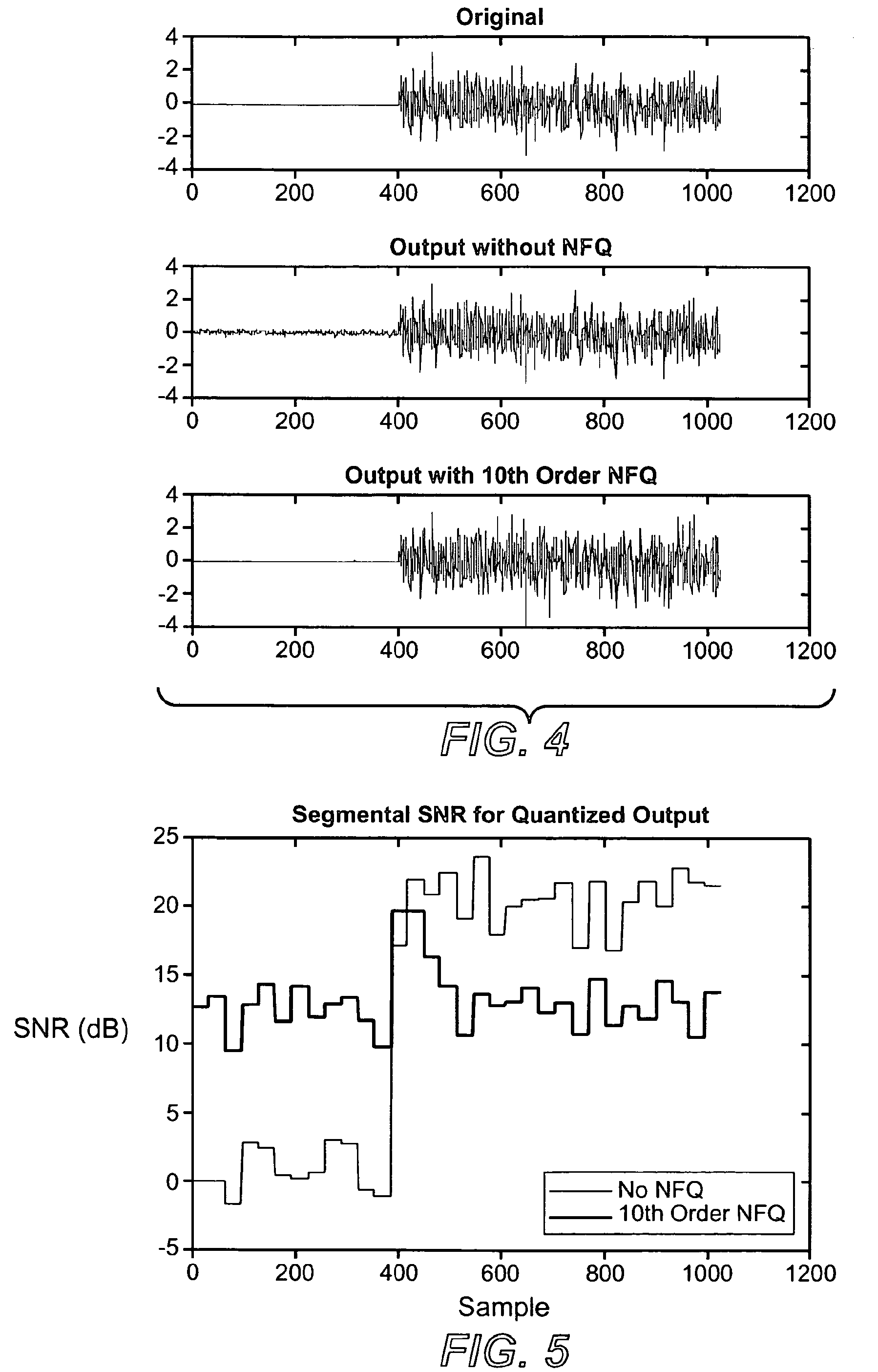Arbitrary shaping of temporal noise envelope without side-information
- Summary
- Abstract
- Description
- Claims
- Application Information
AI Technical Summary
Benefits of technology
Problems solved by technology
Method used
Image
Examples
Embodiment Construction
Spectral Domain Noise Feedback Quantization (NFQ)
[0034]Most modern audio coding techniques, including AAC (see reference 2, below) and AC-3 (see reference 4, below), perform quantization in the spectral domain in order to control, in a perceptually relevant way, the noise introduced by quantization. Typically, the input time waveform is converted to the spectral domain using a time-frequency transform such as the MDCT. In parallel to the time-frequency transformation a perceptual model is calculated, which is then used to control the quantization noise occurring in each of the output coefficients of the time-frequency transform. FIG. 2 is a schematic block diagram showing a simplification of a prior art modern audio coding system (encoder and decoder) in which the input is converted to the spectral domain and the spectral representation of the signal is then quantized. A discrete time-domain signal x(n) is applied to a time-to-frequency transform or transform function (“Time to Freq...
PUM
 Login to View More
Login to View More Abstract
Description
Claims
Application Information
 Login to View More
Login to View More - R&D
- Intellectual Property
- Life Sciences
- Materials
- Tech Scout
- Unparalleled Data Quality
- Higher Quality Content
- 60% Fewer Hallucinations
Browse by: Latest US Patents, China's latest patents, Technical Efficacy Thesaurus, Application Domain, Technology Topic, Popular Technical Reports.
© 2025 PatSnap. All rights reserved.Legal|Privacy policy|Modern Slavery Act Transparency Statement|Sitemap|About US| Contact US: help@patsnap.com



